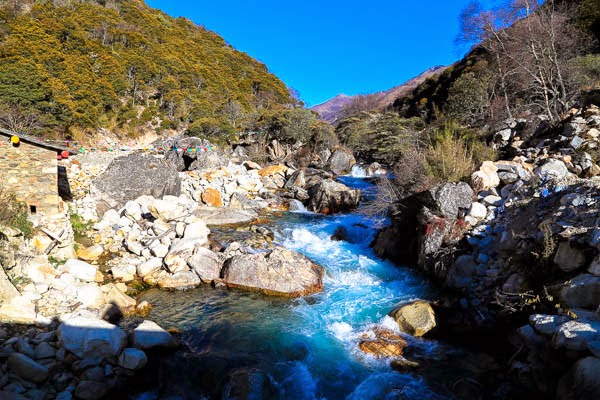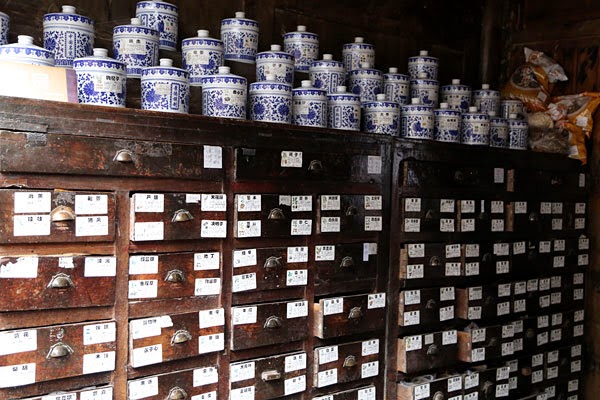
We expected this to be our toughest road trip ever. And it was.
And it deserved to be. It's not just the elevation, but a multitude of factors that could go (and did go) wrong when traveling through one of the world's harshest climatic zones.

But the rewards were too tempting. Exotic tribal culture, breathtaking (pun intended) sceneries, and the hardship that inevitably goes along with it -- it's bragging rights material, and few travelers I know can resist the allure of the Tibetan Plateau.

The preparation took months -- consulting the locals on routes, consulting official and unofficial sources for road conditions and closures, even taking Tibetan herbal remedies for preventing altitude sickness. I have a lot of respect for this land, and I wasn't going to take chances especially with my wife traveling with me.

Our route would take us through the easternmost section of the Tibetan Plateau, just outside the edges of Tibet's modern political boundary. It's a ruggedly spectacular land known to travelers as Western Sichuan, an ethnic Tibetan annex in a predominantly Han Chinese province. And to most Han Chinese, this is the wild, wild west.

Some consider Western Sichuan more traditionally Tibetan than Tibet itself -- the population is more tribal and culturally diverse, and the ancient indigenous Tibetan religion of Bon is more prevalent here than in Tibet proper. Ever since time immemorial this has been home to three culturally distinct groups of Tibetans, and we would come face to face with all three.

But it was mainly due to practical reasons that we chose Western Sichuan -- no Tibet Travel Permit was required of foreigners, and plus, the medieval towns of historic Sichuan (e.g. Langzhong and Shangli) were also within striking distance. The decision was easy: we'd opt for the two trips in one.

Two weeks before departure I called up Gao Shifu, the first of many drivers we would end up hiring along our journey. Gao isn't his real name -- he goes by the Tibetan name of Abu when speaking with his own kinsmen. This is a most honest and trustworthy driver, one whom I'd fully recommend to fellow travelers, providing that you have someone being able to communicate with him in Chinese or Tibetan.

His passenger van would carry us through 250km of winding mountain roads in one day, starting out from Dartsedo / Kangding, climbing the mountain pass of Mount Zheduo to Xinduqiao, onto Lhagang / Tagong of the Khampa tribe, and finally ending the day in the villages of Danba where we would spend the next three nights.

Only two paved roads led from Dartsedo to Xinduqiao -- the shorter, always under construction and thus highly congested Highway G318, or a longer but well-paved "Loop Road" that was entirely unknown to us at the time. Gao Shifu decided to treat us, at his own cost of gas, to the long and scenic loop which wrapped around the north face of Mount Zheduo.

30km or so north of Dartsedo we passed by a series of steaming hotsprings near the tiny hamlet of Zhonggu. The little hut on the left was the change room/washroom, behind which sat a small pool of barely 3m x 3m. I can't describe how good it felt to warm my freezing hands in the 30+ degree Celsius water.

The lonely asphalt road snaked its way up Mount Zheduo's north side, above the tree line and into a country of alpine meadows and seasonal lakes. In July this would have been carpeted with wild flowers and shrubs, and awaited us in November was a more prototypical Tibetan scenery of half-frozen steppes with the odd rock piles or prayer flags at strategic spots.

Rugged mountain peaks and sharp valleys hewn out of volcanic rocks by retreating glaciers -- that's my memory of the Tibetan Plateau. Landscape like this would stretch for another 2500km to the northwest, and slanting progressively higher, in the direction of the Hindu Kush.

For the first time in our lives we set foot at 4400m above sea level, roughly half the elevation of Mount Everest, on the northern saddle of Mount Zheduo. We would reach similar elevations a couple more times later on our journey, but the first time was most memorable especially under such glorious blue skies.

The panoramic views were absolutely magnificent -- by sheer luck the majestic peaks of the famous Minya Konka, the third highest peak outside of the Himalayas, could be clearly seen from 100km away through the crisp mountain air. Needless to say this peak of 7556m was the highest we had ever seen.

Farther to the west loomed the snowy 6000m peaks of the Shaluli Mountains. In the foreground was the tiny civilian airport of Kangding, the third highest in the world at 4280m. It's probably not a great idea to fly in from sea level and cope with this extreme variation in elevation though.

This whole time Gao Shifu had been extremely careful with his driving, negotiating continuous hairpin turns as the downhill roads turned treacherous to the west of the summit. Somewhere on the way down the permafrost started giving way to golden pastures, sparse villages became visible from a distance and massive eagles soared in the skies above. That's when we knew we're approaching Xinduqiao.

Xinduqiao was just another anonymous settlement along the G318 route until its recent discovery by domestic Chinese photographers. Since then its reputation as one of the China's top spots for autumn foliage colours has attracted droves of wealthy amateurs and their telephoto lenses every October.

Foliage season or not, this idyllic landscape of Tibetan stone houses, white stupas and roaming yaks was worth the long drive. Even as we arrived in November, full SUVs with license plates from as far as Beijing could still be spotted at roadside viewpoints.

From Xinduqiao we hurried north in the direction of Lhagang, the road now meandering alongside a furious creek with an ever-increasing concentration of rock inscriptions adorning the sides of the deep valley. We knew we're about to encounter something special when Gao Shifu stopped his van at a narrow crossing of the river ...

"The Holy Mountain of Potala - Do not endanger the animals and the forest" was posted, bilingually in Tibetan and Chinese, at this wobbly, dilapidating bridge. I was somewhat alarmed when a wooly Tibetan dog (not a mastiff!) eyed us from the other side and started to cross the bridge, but it was soon apparent that he just wants some companionship from humans.

I don't think the bridge was quite up to standards in terms of safety! I took a brief walk on the holy mountain to check out a couple of Stupas before returning to Gao Shifu's van. The dog didn't cross back to the holy mountain -- I imagine he would wait on the roadside for his master's return.

Prior to this trip neither myself nor my wife had ever seen a yak in real life. For the next 10 days they would become our main source of sustenance, providing us with butter for tea and meat for our meals. We would even share a car with a former yak cowboy, but that's a story for later.

Our first meal of yak meat awaited, unbeknownst to us, less than an hour later at the nomadic market town of Lhagang, home to the spectacular Lhagang Lamasery. Here we would take a lunch break before continuing our road trip towards our eventual destination of Danba, to be covered in the next article.






























